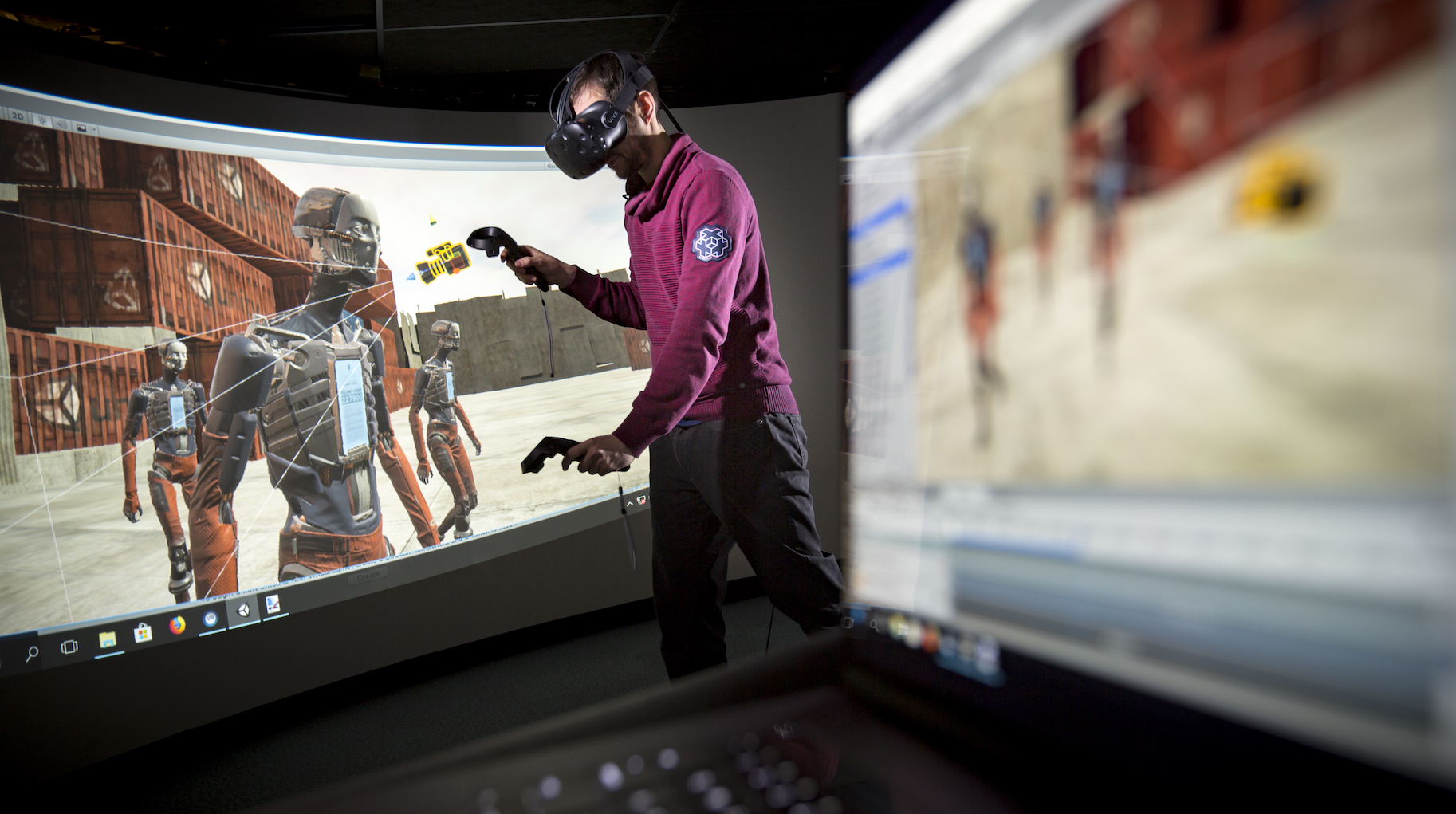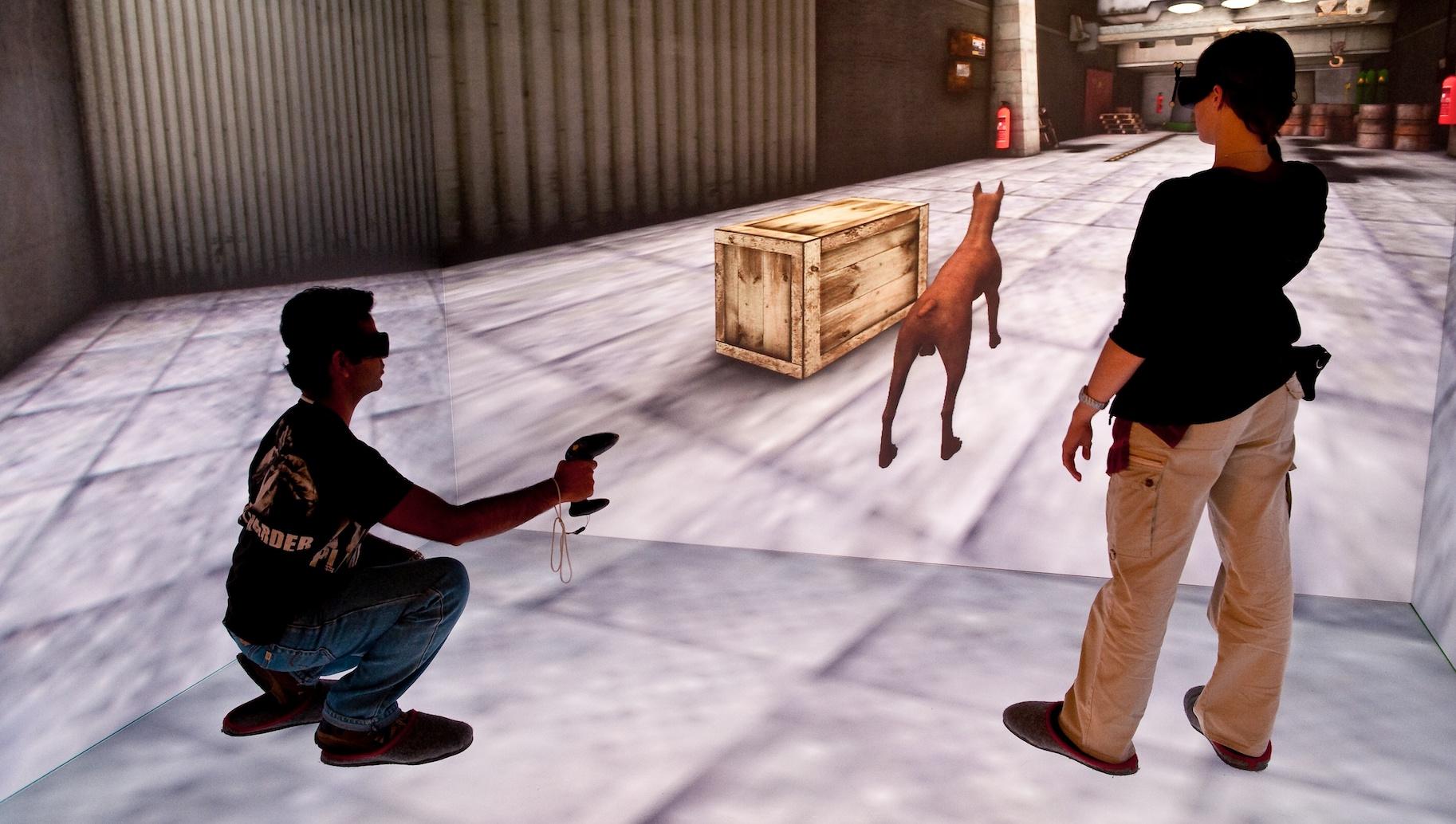
Entertainment
Not surprisingly, the video game industry is one of the biggest promoters of virtual reality. Indeed, aware of the infinite possibilities that virtual reality generates to revolutionize the ways of playing and to give video game fans extraordinary experiences, it has indeed quickly adapted to the technology as the hardware allowing to play in virtual reality (VR for virtual reality) was spreading. Today, all the major players in the industry have jumped on board, led by Sony.
But the use of VR in the field of entertainment goes, today, well beyond video games. Music, cinema, theme parks... all sectors are now embracing the technology.
In museums, for example, virtual reality is now used to engage the public through various immersive experiences (reliving historical scenes from the heart of the action, or from different points of view). In art, too, virtual reality allows us to go further than "simple" 3D digitizations of paintings. Artists have been experimenting with VR as a medium to express their creativity for a few years now.
Health
Medical virtual reality is also a field with fascinating possibilities. From assisting or simulating the performance of complex surgical procedures, to diagnosing a patient, the technology is now helping to evolve the training and education of professionals in the field. Some companies are already offering VR solutions to train surgeons or allow them to practice to hone their skills. A Harvard Business Review study published in 2019 showed, moreover, that surgeons trained with virtual reality experienced a 230% increase in overall performance compared to their traditionally trained counterparts (see article for modes of performance evaluation). The former were also faster and more accurate in performing surgical procedures than the latter.
Virtual reality is also proving useful for planning complex operations, such as neurosurgical procedures, well in advance, as it allows the surgical team to visualize the entire procedure and potentially "rehearse" it multiple times like a choreography, to maximize safety and minimize surprises. VR technology is also used in the pain relief and rehabilitation of patients suffering from severe pain, such as burn victims, by allowing them to focus on a virtual setting rather than on the pain.
Finally, virtual reality is proving interesting in psychological therapies, particularly in the treatment of PTSD (post-traumatic stress disorder). Virtual environments are thus used as a form of exposure therapy, in which a patient is subjected - under controlled conditions - to stimuli that in his real life cause him distress. The application has two major advantages over real-life exposure therapy: it is much more convenient and patients are more willing to try the therapy because they know that it is not the real world. The brain is tricked enough to allow the patient to move forward in their healing process, but still retain a sense of security from the virtual aspect of the exposure.
Architecture
Virtual reality has the potential to transform the way professionals design buildings, but also the way clients experience and review proposals.
Architects can use virtual reality to understand how their designs work in real-world scenarios (environment, lighting, etc.) and identify errors or problems early in the design process. Virtual reality also has the advantage of enabling greater multi-user collaboration, simplifying and accelerating the revisions that are part of the building design process.
On the client side, VR offers the ability to see and walk through a structure, even before it is built, in a much more realistic way than through a model or 2D plan. The immersive environment provides sensations of scale, depth and spatial awareness that are close to reality.
Automobile
In the automotive industry, manufacturers have also embraced the technology to save time, money, safety and efficiency.
Virtual reality is used to reduce R&D and manufacturing costs by thoroughly testing virtual prototypes of new vehicles before any physical part is produced, thus avoiding frequent reworking of previous decisions or endless modifications. This helps to significantly reduce the overall cost of a project. Designers can also easily make changes without having to scrap the entire model, as they often would with physical models. This makes the development process more efficient and less expensive in every way.
The technology is also proving to be a sales-boosting mechanism for automakers and dealerships. By deploying virtual showrooms, where potential customers can customize any model of car and then inspect the exterior and interior in virtual reality, the number of online sales is bound to be greatly increased. Virtual reality thus eliminates the need to rent larger areas and place many cars at dealerships.
Finally, in the autonomous vehicle sector, some manufacturers are equipping test software with VR technologies to "teach" vehicles to "understand" how they should behave in real-world conditions, all in virtual environments, without human risk and without fuel or repair costs.
In 2019, the global market for virtual reality in the automotive industry was less than $1 billion ($759.3 million )and is expected to reach $14.7 billion by 2027. Many automakers have already embraced the technology, for a variety of reasons - Ford Motor Company to hone the skills of its technicians, Volkswagen to reduce car design costs through virtual prototyping, Audi to improve the safety of self-driving car manufacturing by conducting virtual reality tests, and finally BMW and Tesla to increase sales with immersive showrooms for one, and virtual journeys for the other.
Training
Training for certain operations or situations cannot always rely solely on theoretical learning. Some trades need training in real conditions, which can be risky, costly, or even impossible in some cases.
Virtual reality training simulates a work environment or a situation in order to allow the learner to familiarize himself with the realization of his tasks, to learn gestures and processes or to practice difficult and stressful situations.
This is particularly true in the field of aviation, where virtual reality allows pilots to carry out flights in various weather and human conditions in order to be able to react in the best possible way to different scenarios. In the military, too, the technology is used, allowing soldiers to acclimatize to certain vehicles, situations, or conduct virtual raids without risk of injury or accident.
Many sectors now train their employees using virtual reality devices: commerce, automotive, medicine, delivery, security... Whatever the need, virtual reality gives the possibility to go as far or even beyond traditional training.
